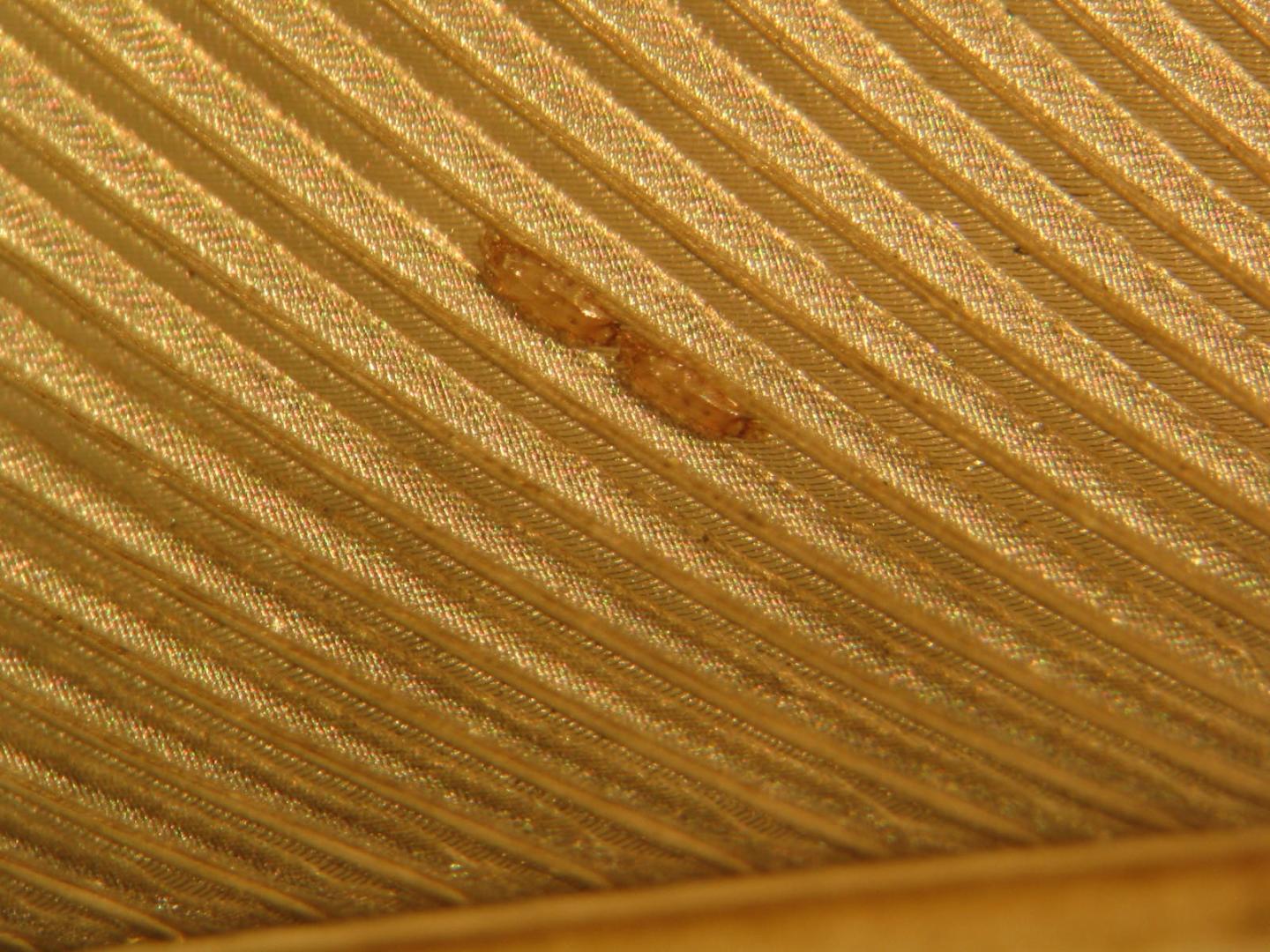Microscopic analysis shows feather mites may be beneficial to birds — not harmful, as previously thought

Credit: Heather Proctor
Feather mites help to remove bacteria and fungi from the feathers of birds, according to a new study by University of Alberta biologists. In fact, the relationship between these mites and their hosts could be considered mutualism, with bird feathers collecting food for mites to eat and mites providing the birds with healthier plumage.
“Until we published this paper, our understanding of feather mites’ diet was limited to scattered observations that their guts often contained fungal spores,” said Heather Proctor, co-author and professor in the Department of Biological Sciences. “We concluded that vane-dwelling feather mites do not eat feathers. Rather, they feed mainly on fungi and bacteria that get caught in or grow on the feathers.”
There are more than 2,500 species of feather mites that live inside the hollow quills of feathers, in the fluffy down, and on the vanes of wing and tail feathers. Until this study, vane-dwelling mites have often been assumed to be parasitic, like feather lice, which are harmful to birds.
Alongside undergraduate student Arnika Oddy-van Oploo, Proctor conducted a rigorous investigation of what vane-dwelling feather mites eat. The pair examined the gut contents of 1,300 individual mites representing 100 different species, collected from 190 bird species. Co-authors augmented these data with genetic analyses of the diets of a smaller number of feather mites.
“Their diets indicate that they are either harmless commensals or possibly even beneficial mutualists that clean their hosts’ feathers of pathogenic microbes,” explained Proctor. “This may explain why birds have often been observed to be heavily laden with feather mites and have plumage that’s in excellent condition.”
The discovery may have implications for those who work with wild birds. “This information could also influence those who take care of wild birds in captivity, such as rehabilitation or in zoos, where birds are typically treated with chemicals to remove lice, which can also remove the potentially helpful feather mites,” said Proctor.
The researchers collaborated with geneticist Jorge Doña, scientist in the Department of Evolutionary Ecology, Estacion Biologica de Donana in Sevilla, Spain. The paper, “Feather mites play a role in cleaning host feathers: New insights from DNA metabarcoding and microscopy,” was published in Molecular Ecology (doi: 10.1111/mec.14581).
###
Media Contact
Katie Willis
[email protected]
Original Source
https:/
Related Journal Article
http://dx.




